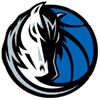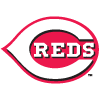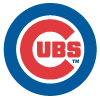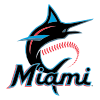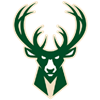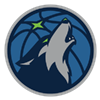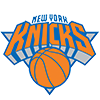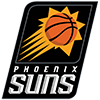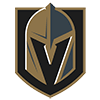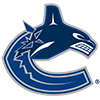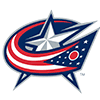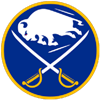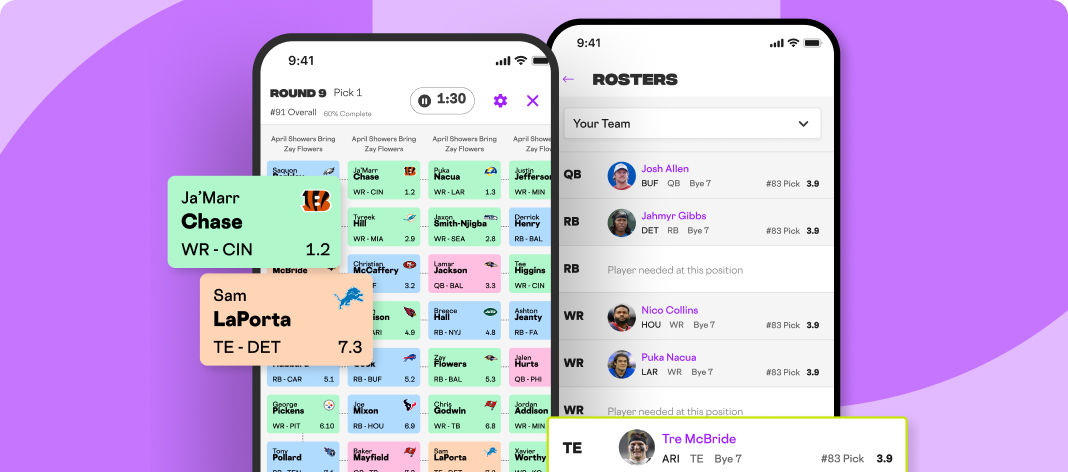In the second portion of the season previews, we take a look at the Atlantic Division. From the two-time reigning champions, a pair of regular-season stalwarts and some teams on the rise, this division has some of everything and should be highly competitive throughout the year.
Florida Panthers
Any championship is well worth celebrating, but going back-to-back in this era is even more special. That's what the Panthers pulled off last year, and it was through savvy trades and players being willing to play through pain to earn their glory. The band is mostly sticking together this time, and while they may not lead the regular season, they're more than capable of stepping up in the playoffs.
The departures were mostly limited to depth players this summer, with Nico Sturm heading back to Minnesota, Nate Schmidt and Vitek Vanecek moving to Utah and Jaycob Megna signing with Vegas. The Panthers were able to retain the services of Sam Bennett, Brad Marchand and Aaron Ekblad, and they also kept Tomas Nosek (knee), who briefly tested free agency. Daniil Tarasov is in the fold to back up Sergei Bobrovsky, and Jeff Petry signed to fill out the defense. Luke Kunin also signed in August and will contend for a fourth-line role. All in all, it was good business by the Panthers to keep their core together, though they'll be missing Matthew Tkachuk (groin) for likely half of the season at a minimum after he underwent surgery to repair the
In the second portion of the season previews, we take a look at the Atlantic Division. From the two-time reigning champions, a pair of regular-season stalwarts and some teams on the rise, this division has some of everything and should be highly competitive throughout the year.
Florida Panthers
Any championship is well worth celebrating, but going back-to-back in this era is even more special. That's what the Panthers pulled off last year, and it was through savvy trades and players being willing to play through pain to earn their glory. The band is mostly sticking together this time, and while they may not lead the regular season, they're more than capable of stepping up in the playoffs.
The departures were mostly limited to depth players this summer, with Nico Sturm heading back to Minnesota, Nate Schmidt and Vitek Vanecek moving to Utah and Jaycob Megna signing with Vegas. The Panthers were able to retain the services of Sam Bennett, Brad Marchand and Aaron Ekblad, and they also kept Tomas Nosek (knee), who briefly tested free agency. Daniil Tarasov is in the fold to back up Sergei Bobrovsky, and Jeff Petry signed to fill out the defense. Luke Kunin also signed in August and will contend for a fourth-line role. All in all, it was good business by the Panthers to keep their core together, though they'll be missing Matthew Tkachuk (groin) for likely half of the season at a minimum after he underwent surgery to repair the injury sustained at the 4 Nations Face-Off in February.
Even without Tkachuk, the Panthers boast a formidable offense. Aleksander Barkov and Sam Reinhart are two of the best two-way forwards in the game, while Sam Bennett and Brad Marchand could make for a formidable second-line duo. Barkov carries some injury risk, and he is battling a leg injury sustained in practice. The Panthers typically take their time with injured players, since they have expectations to play into June. Carter Verhaeghe had 20 goals and 53 points in the regular season, a down year for him, and he could be a 30-goal threat once again if he bounces back. Mackie Samoskevich arguably has the most to gain while Tkachuk is out, which could include a full-time top-six job if the former starts well. Anton Lundell, Evan Rodrigues and Eetu Luostarinen are all strong middle-six forwards that should earn fantasy relevance playing for an up-tempo offense. There are plenty of fourth-line candidates, headlined by Nosek, Kunin, Jonah Gadjovich, A.J. Greer and Jesper Boqvist, but the Panthers won't need to carry all of them, so it's possible some get waived or traded prior to the start of the season. Nosek will be out multiple months due to a significant knee injury sustained in the offseason.
Defensively, the duo of Aaron Ekblad and Seth Jones will make the most noise on offense. The rest of the expected defense consists of elite shutdown specialist Gustav Forsling, a physical pair in Niko Mikkola and Dmitry Kulikov, a veteran in Petry who can hit and block shots on the third pairing, and Uvis Balinskis or Tobias Bjornfot as the seventh blueliner. Ben Harpur is also in camp on a tryout and has looked steady in preseason action. Considering the Panthers' strengths as a team, all of the first six blueliners should be viable in deeper formats, especially since they'll likely have positive plus-minus ratings. It's still Bobrovsky in goal, and while he's a bit of a risk at age 37, he has maintained sub-2.50 GAA marks over the last two years. Those seasons have been some of his best with Florida, and he'll be playing for a new contract in the final year of his current deal. Meanwhile, Tarasov gets a boost in the backup role after failing to impress with the Blue Jackets. Tarasov has plenty to prove and will likely get 25-30 games to do so as he also prepares to face unrestricted free agency next summer.
Championship teams can be tough to read for fantasy. They know what it takes to win and will be cautious with players in the regular season in an effort to be prepared for the playoff grind. Missing a multi-category superstar like Tkachuk will hurt the offense, but the Panthers know how to win in a variety of ways. There's as many as 10-12 fantasy-relevant players on the roster, so don't be too concerned about how much extra mileage this team has racked up in recent years.
Toronto Maple Leafs
It finally happened -- Mitch Marner is off to Vegas, leading to a seismic shift rippling through the rest of the roster. Something had to change, as regular-season success only goes so far in hockey's most intense market. Still, losing a point-per-game player is going to be tough to address, especially after there was no major splash in free agency.
In addition to Marner, Toronto parted ways with Max Pacioretty, Pontus Holmberg, Jani Hakanpaa (knee), Alex Steeves and Matt Murray. They got John Tavares, Steven Lorentz and Dakota Mermis to re-sign, and they traded for Matias Maccelli from Utah, Dakota Joshua from Vancouver and Nicolas Roy from Vegas, with Roy being the return for Marner in a sign-and-trade deal on the eve of free agency. Travis Boyd and Vinni Lettieri signed in free agency to compete for fourth-line jobs, and a later trade turned winger Ryan Reaves into defenseman Henry Thrun. That's a decent amount of turnover, but Toronto remains tight to the cap, making a bigger trade or signing unlikely unless some money is moved out.
The good news for the forward group is that Auston Matthews and William Nylander are still around. That gives the opportunity to load up one line or spread the offense across two lines. The departure of Marner also creates an opening for one of the best gigs in hockey -- whoever gets to feed passes into Matthews on a nightly basis. Matthew Knies should stick on the top line, but the other wing spot is up for grabs. Max Domi, Maccelli, Bobby McMann or Calle Jarnkrok could see a significant boost in fantasy value if they stick on the top line, as it's likely a middle-six job with little-to-no power-play time if they don't. Maccelli is the intriguing one as a newcomer to the Maple Leafs, especially since he showed significant promise as a playmaker in Arizona before failing to keep pace with Utah's prospects when the team moved north. Don't discount Tavares, even though he's no Matthews. A second-line spot in Toronto can still be fruitful. Joshua, Lorentz, Roy and Scott Laughton should all be regulars in the bottom six, while David Kampf and Nicholas Robertson could compete for chances. Robertson is still seen as a trade candidate, but consistency is the main concern with his game. Both Roy and Domi are dealing with lower-body injuries in camp, which could give some depth players a chance to make an impact if the issues linger into the regular season.
Defensively, there's no shortage of shutdown blueliners on the roster. Morgan Rielly and Oliver Ekman-Larsson are the top offensive options, while Chris Tanev, Brandon Carlo, Jake McCabe, Simon Benoit (upper body) and Thrun will fill out the defense. If the Maple Leafs' power-play returns to the four-forward, one-defenseman structure, Rielly and Ekman-Larsson will get a boost -- both ended up seeing less time with the man advantage when Toronto deployed a five-forward power-play unit last year. The fantasy upside on this blue line is pretty limited, as Rielly is more of a 50-55 point player and the rest will likely be at 30 points or less. There's physicality in the group, but there are higher-scoring options out there. Meanwhile, the goaltending tandem of Anthony Stolarz and Joseph Woll is back. This duo was one of the best in the league last year, but both dealt with some wear-and-tear injuries. Neither is likely to get enough playing time to be a top-tier fantasy goalie, but either one is good enough to be a No. 1 option, especially when the other is out. They'll be a strong source of wins and save percentage, especially if the Maple Leafs can't improve on allowing 29.3 shots per game, which was the eighth-highest mark in the league last season. Woll is attending to a personal matter during camp, so keep an eye on Dennis Hildeby, who is likely the No. 3 and should be on the radar in fantasy whenever one of Toronto's goalies is unavailable.
The Maple Leafs will definitely be different this year. The pressure is on the core players that remain to prove that they aren't the problem. Patience in Toronto always runs thin, and while this team's offense took a hit without a meaningful improvement on the blue line, there's still enough talent to remain near the top of the division. Fantasy managers will be happy if the team's top players maintain the status quo in the regular season, especially with the potential for a sleeper pick to pan out into a valuable line stack.
Tampa Bay Lightning
The Lightning have had to watch their in-state rivals, the Panthers, head to the Stanley Cup Finals three years in a row. It's not nearly as fun as going there themselves, as they did in the years at the start of the decade. This is a team that still gets a lot of value out of its middle six and always seems to find a diamond in the rough that can become an NHL regular. Age is a concern with key players, but there's enough depth to keep Tampa Bay in the mix in 2025-26.
The roster should be a bit younger this year, with veteran forwards Luke Glendening and Cam Atkinson leaving the roster. Defenseman Nick Perbix also was allowed to walk in free agency and signed with Nashville. Coming aboard this year are Wojciech Stachowiak, Jakob Pelletier, Scott Sabourin, Pontus Holmberg, Boris Katchouk, Tristan Allard and Nick Abruzzese. None of those players have enough of a track record to be locks for the roster, but some will certainly end up in fourth-line roles. With no additions on defense, the training camp battles figure to be up front.
The Lightning still have one of the league's most formidable top-six groups up front, led by Nikita Kucherov, Jake Guentzel, Brayden Point and Anthony Cirelli. Brandon Hagel (concussion) and Oliver Bjorkstrand (lower body) recovered from injuries sustained last season and should fill out the second line. Yanni Gourde, Gage Goncalves and Mitchell Chaffee should be in the mix for middle-six spots, though Conor Geekie could force the issue if he's on the Opening Night roster. Nick Paul (upper body) won't be available for the first month of the season, but he'll also be a third-line option once healthy. Zemgus Girgensons is about the only fourth-line lock, while Holmberg and Pelletier should lead the charge to fill out the lineup. The Lightning lean top-heavy in ice-time distribution, as they should, and they will continue to be top-five caliber in both total scoring and power-play efficiency after finishing first in goals (3.56 goals per game) and fifth in power-play percentage (25.9 percent) last regular season.
Andrei Vasilevskiy highlights the defensive effort, especially after reversing a few years of decline with a career-best 2.18 GAA and a four-year high .921 save percentage in 2024-25. He couldn't stop the Panthers in the first round of the playoffs, but Vasilevskiy is entering 2025-26 rested and with some momentum. He's been brought along slowly at training camp, but fantasy managers shouldn't be worried yet. At 31 years old, he won't be at peak performance much longer, but he should still be firmly in the top tier of NHL netminders. He'll continue to play a bunch, as Jonas Johansson can't be trusted with a heavy workload. The blue line, meanwhile, is still led by Victor Hedman, who should still have another year or two of 60-point potential. Darren Raddysh is usually on the second power-play unit despite a bottom-four role at even strength. Defensive specialists Ryan McDonagh and Erik Cernak will see top-four minutes, while J.J. Moser and Emil Lilleberg are slightly younger regulars in the lineup. Steve Santini, Max Crozier and Declan Carlile all have a little NHL experience, positioning them well to be the next man up when injuries strike.
The Lightning are doing everything they can to keep their competitive window open. There's no obvious breakout candidate on this roster, but fantasy managers in deeper formats can trust players like Gourde and Paul for depth roles. Expect steady results and plenty of points from around the roster, which should still be a playoff team.
Montreal Canadiens
Breaking into the playoffs in the Atlantic Division isn't easy, but the Canadiens were able to snag a wild-card spot as one of 2024-25's biggest surprises. They have a young core with room to grow and serious firepower at all positions, so they won't be surprising anyone this year. There's risk in all that youth, but don't ignore a team that should take a big jump from finishing 21st on the power play and 17th in goals scored.
Montreal took a big swing to begin their offseason, acquiring Noah Dobson from the Islanders for Emil Heineman, providing an instant boost to the defense. The Canadiens then lost Christian Dvorak (Philadelphia) and Joel Armia (Los Angeles) in free agency, weakening their bottom six. Little-used forward Michael Pezzetta also left and signed with the Maple Leafs. Another trade on the first day of free agency saw Zachary Bolduc heading to Montreal, with Logan Mailloux leaving a crowded defense pipeline to join the Blues. The rest of the additions were on the fringes, as Kaapo Kahkonen is the new No. 3 goalie, replacing Cayden Primeau, who was dealt away to the Hurricanes. Sammy Blais, Joe Veleno and Alex Belzile are also joining the Canadiens to fill out the organizational forward depth, while Marc Del Gaizo will add to the blue line after seeing some time with the Predators.
The days of the Canadiens being a one-line team are over. Sure, the trio of Nick Suzuki, Cole Caufield and Juraj Slafkovsky remains one of the best young lines in the league. Montreal's center depth is lacking, as Kirby Dach (knee), Alex Newhook and Veleno or Jake Evans will work down the middle. Dach is expected to be available for Opening Night, but his long injury history will give fantasy managers pause. The wingers are looking more promising, with rookie Ivan Demidov and Bolduc signaling the next wave of talent. Patrik Laine may once again be relegated to a power-play specialist role -- he spent a lot of even-strength minutes in the bottom six, though he's now far enough removed from his significant knee injury to be trusted with a heavier workload, though he's recovering from a broken finger sustained in the playoffs. In addition to the other depths forwards, agitating wingers Brendan Gallagher and Josh Anderson are poised to reprise their third-line roles in 2025-26. There's also room for a prospect or two to make the Opening Night roster, so Joshua Roy, Oliver Kapanen or Owen Beck could push Veleno or Blais.
On defense, a top-four quartet of Dobson, Lane Hutson, Mike Matheson and Kaiden Guhle is extremely strong. Dobson and Hutson will likely monopolize the power-play minutes, though it remains to be seen if there's room for both on the top unit, while Matheson and Guhle offer all-around upside. Don't discount Alexandre Carrier either -- his role will be smaller this year, but he was excellent after being traded from Nashville last year. Arber Xhekaj, Jayden Struble and Del Gaizo will compete for the last spot in the lineup, with all of them offering significant physicality. Given the strength of the top-four blueliners, don't expect much ice time for the third pairing. All that depth also means David Reinbacher will continue developing with AHL Laval after missing most of 2024-25 with a knee injury. This defensive group will be supported by Sam Montembeault, a Canadian Olympic hopeful and the team's clear No. 1 goalie. Jakub Dobes and Kahkonen will compete for the backup role. Dobes was a bit of a surprise last year, but he's still young at age 24, which could lead to some uneven play.
There's little margin for error with the Canadiens, and that's exclusively due to the division they're in. They have to prove they're better than the top teams, and that's a lot of pressure for a young team. They're talented, exciting and dripping in potential, but progress is rarely linear -- they could finish anywhere between third and sixth in the Atlantic this year, but they probably won't slip all the way to the bottom.
Ottawa Senators
Much like the Canadiens, the Senators made a long-awaited return to the postseason last year. Expectations have been higher in Ottawa, which has started to make notable deals to improve specific roster slots on the team. It's less about integrating prospects and more about finding the right mix now. However, there are question marks in key areas that could temper expectations.
The Senators saw a number of depth players leave at the end of the season, including Matthew Highmore (Islanders), Adam Gaudette (Sharks), Anton Forsberg (Kings), Travis Hamonic (Red Wings), Dennis Gilbert (Flyers), Angus Crookshank (Devils) and Cole Reinhardt (Golden Knights). Outside of Forsberg, who has obvious replacements in-house, none of these should be significant losses. Claude Giroux and Nick Cousins re-signed prior to free agency, while Lars Eller (abdomen), Olle Lycksell and Arthur Kaliyev are new to the team. Eller addresses the need for a defensively reliable bottom-six center, but the rest are depth moves with upside. There was also the draft-day trade to snag Jordan Spence from the Kings, which should give the Senators' blue line a bit more depth and potential.
The forward group looks largely the same at the top end, with the biggest change being Dylan Cozens instead of Josh Norris, a trade that was completed at the deadline in March. Tim Stutzle and Cozens will center the first two lines, flanked by some combination of Brady Tkachuk, Drake Batherson, David Perron, Fabian Zetterlund and Giroux. Batherson (undisclosed) is questionable for Opening Night, which could open up a chance for Zetterlund to get a larger look in the top six. Zetterlund was a successful power winger with the Sharks prior to last year's trade deadline, but he never got much of a chance to make an impact with the Senators. Shane Pinto and Ridly Greig are set to remain on the third line, and while they won't be the most consistent scorers, they can still chip in enough to help in fantasy as well. Rolling three lines is likely the answer for the Senators, as the depth falls off with a fourth-line competition led by Michael Amadio, Eller and Cousins, while Kaliyev, Lycksell and Zack MacEwen compete to round out the lineup. This group has potential to improve on an average of 2.95 goals per game, but it's the potential to be an offense with a high shot volume (29.3 shots per game, eighth in the league) and a team that plays with a massive physical edge (2,106 hits, fourth in the league) that is enticing for fantasy potential.
A 57-point breakout campaign in 2024-25 elevates Jake Sanderson over Thomas Chabot as the Senators' top blueliner. Sanderson has turned into a minutes-eater, lightening Chabot's workload to the benefit of both players. They'll play on pairings with shutdown blueliners Artem Zub and Nick Jensen (hip), assuming Jensen is fully recovered to begin 2025-26. Spence figures to get the first crack at the third pairing and could be a candidate for the second power-play unit. Tyler Kleven (undisclosed) and Nikolas Matinpalo will also compete for the last spot unless the Senators opt to go with seven defensemen, which could very well be an option given their mediocre fourth-line forwards. Prospect blueliner Carter Yakemchuk could enter the conversation in training camp, but he'll need to be extremely impressive to win a job right away. Sanderson is a standout, but the rest of the blue line is mostly just steady, presenting an average or slightly better outlook for Linus Ullmark, who will look to be healthier after dealing with back issues in 2024-25. The backup job is up for grabs between Leevi Merilainen and Mads Sogaard, but Merilainen's strong 12-game sample last year seems to have vaulted him ahead of Sogaard in the organization's goalie group. If Merilainen can replicate his 1.99 GAA in a 25-plus game effort in 2025-26, he'll be a worthy No. 3 or 4 goalie in fantasy.
It's not hard to see the Senators taking another step forward. The top six is relatively young, the defense is structured and the goaltending has potential. They're still not quite ready to lead the Atlantic, but expect them to be above the playoff line for a majority of the year, with category coverage to be envied in the fantasy arena.
Buffalo Sabres
A long playoff drought has gotten under the Sabres' skin. It may have impacted their approach to the offseason, which included turning one promising young player into two solid skaters at positions of need. Simply put, business as usual won't suffice. Potential is good, but at some point, it needs to become results.
The Sabres opened the offseason with a pair of notable trades, sending winger JJ Peterka to the Mammoth for forward Josh Doan and defenseman Michael Kesselring. A smaller swap saw Conor Timmins come from the Penguins in exchange for Connor Clifton. Buffalo probably won't miss the departures of Sam Lafferty, Jacob Bernard-Docker and James Reimer, who were all small pieces on the roster at the end of last season. They added goalie Alex Lyon, wingers Justin Danforth and Carson Meyer (knee) and defenseman Zac Jones early in free agency, and they also signed Bowen Byram to a two-year deal before arbitration. Byram could still be dealt at some point, as it's clear the Sabres want to keep remodeling the blue line, but for now, they've got plenty of depth to work with. Buffalo also added Alexandar Georgiev in September, which could lead to a crowded crease initially.
The Sabres' offense is still led by Tage Thompson, with Josh Norris (oblique) -- who is healthy entering 2025-26 -- Alex Tuch and Jason Zucker also locks for top-six spots. Zach Benson should be in that mix as well, while one of Jack Quinn or Ryan McLeod will fill out the second line depending on if Thompson is utilized as a center or a winger this season. McLeod impressed last year with 20 goals and 53 points in 79 games in his first year with the Sabres after coming over from the Oilers. Deeper in the lineup, Jordan Greenway (lower body) and Jiri Kulich (undisclosed) should be on the third line when healthy, though Danforth's experience and ability to play center in a pinch makes him a valuable depth forward on the ice. Doan could also get third-line minutes, while some mix of Peyton Krebs, Beck Malenstyn, Tyson Kozak and Meyer will fill out the lineup. Meyer is still recovering from an ACL injury and may need to start the year at AHL Rochester. Doan and Kulich have upside as younger players who could seize larger roles. There's a decent amount of injury risk in the Sabres' forward group, which could drain the team's pedestrian depth if too many players are out all at once.
The blue line should be a strength, though the Sabres gave up 28.9 shots per game last season. Kesselring is the upgrade to the blue line, and he should get top-four minutes along with multi-category fantasy stud Rasmus Dahlin and power-play contenders Owen Power and Byram. Stay-at-home blueliner Mattias Samuelsson will likely see a smaller role, while Jones, Timmins and Jacob Bryson look to fill out the lineup. Samuelsson could be scratched if his defensive play slips, especially with Jones having some upside after being left unqualified by the Rangers. It'll be virtually impossible for the depth blueliners to challenge for top-four roles given the strength of the defensemen on the roster, though a trade could shake things up while bolstering Buffalo's offense. Meanwhile, goaltending could be the weak spot again. Ukko-Pekka Luukkonen took a major step back in 2024-25 and has been hampered by a lower-body injury in camp, while Devon Levi showed promise with AHL Rochester but couldn't translate that success over nine games in the NHL. Lyon is a veteran insurance policy if Levi continues to fall short of expectations or if Luukkonen's struggles persist in 2025-26, and Georgiev's signing creates extra competition for the backup role. Georgiev is in need of a bounce-back year after struggling between Colorado and San Jose last season, but he'll never be a lock for the roster with Levi waiting in the wings.
The Sabres entered a crossroads last year when they fell short of the playoffs, and they've parked in the intersection again. Any streak, good or bad, is likely to inspire moves. They can't keep doing the same thing repeatedly, but it remains to be seen if the aggressive changes they've made ahead of 2025-26 will be enough to get them over the hump after getting lapped by teams that have achieved much shorter rebuilds.
Detroit Red Wings
There were some positives for the Red Wings in 2024-25, especially with the emergence of Marco Kasper. However, they've yet to pull even with the playoff bubble and still have some serious issues on their roster even after making moves to address what's been a carousel in the crease in recent years.
Detroit made moves before free agency, swapping Petr Mrazek for John Gibson (lower body), marking a significant upgrade in goal, assuming Gibson can stay healthy for a full season. The Red Wings also shed salary by sending Vladimir Tarasenko to the Wild. Tyler Motte and Craig Smith are gone from the bottom six and remain unsigned, though Motte has a tryout with Florida, while Alex Lyon (Sabres) and Jeff Petry (Panthers) found new homes and Patrick Kane stuck around on a one-year deal. In free agency, forwards Mason Appleton, James van Riemsdyk and John Leonard are new arrivals, and they're joined by blueliners Ian Mitchell, Jacob Bernard-Docker and Travis Hamonic. These moves are net-neutral at best among the skaters, but the Gibson trade could make a massive swing.
The forward group is led by Dylan Larkin, Lucas Raymond and Alex DeBrincat, while Kasper and Kane offer a nice blend of youth and experience to mix in when the lines get shuffled. Andrew Copp (pectoral) is coming off of surgery and looks ready for Opening Night, though he may slip to the third line. Appleton should also be a third-liner, while J.T. Compher and Elmer Soderblom are capable of reaching that level as well. Van Riemsdyk is a fourth-line power-play specialist at this point, while Michael Rasmussen can bring a heavy angle and Jonatan Berggren offers a little bit of skill in the bottom six. Leonard joins a group including Dominik Shine, Austin Watson, Sheldon Dries and Carter Mazur as the leading candidates to be fill-ins when injuries arise. It's a fine but unimpressive group of forwards, one that's largely unchanged from the group that led the Red Wings to 22nd in the league in goals for (2.87 per game) last season.
The blue line could very easily be the Achilles' heel for Detroit. Moritz Seider and Simon Edvinsson are both young and excellent, but there's just not enough talent around them to elevate this group, which was middle-of-the-pack by allowing 28.5 shots per game last season. Edvinsson is also missing camp due to a lower-body injury. Ben Chiarot and Albert Johansson are back, while former Senators Hamonic and Bernard-Docker will compete for third-pairing spots with the returning pair of power-play specialist Erik Gustafsson and a declining Justin Holl. Add in Mitchell and William Lagesson and consider the potential for prospect Axel Sandin Pellikka to make the jump to the NHL, and there are a lot of bodies but not a lot of proven skill to round out the group. Luckily for the Red Wings, newcomer goalie Gibson has plenty of experience behind leaky defenses in Anaheim the last few years. Gibson is a massive injury risk, especially in the second half of the season, but Cam Talbot is an experienced backup. Sharing the workload should help both stay fresher, and prospect Sebastian Cossa should be ready to fill in whenever Gibson or Talbot are out.
A stagnant free-agent market didn't help Detroit's offseason plans, as they cleared out a bunch of salary but were unable to reel in a big fish to take the team to the next level. If the Red Wings can get into a competitive position early in the year, don't be surprised if they go shopping to boost the blue line or add a young middle-six forward to the mix as they wait for more prospects to develop enough to fill the gaps.
Boston Bruins
Just two years ago, seeing the Bruins near the bottom of the standings would have been unthinkable. However, a 76-point campaign in 2024-25 put them tied for last in the Eastern Conference. The old guard is retired, former captain Brad Marchand is signed long-term in Florida after winning the Stanley Cup and there's a lack of talent ready to fill the gap. Injuries were a massive storyline last year, which could be the difference between bad luck and a rough rebuild ahead if the team is healthier in 2025-26.
As expected, the Bruins lost little and gained a lot in free agency. Jakub Lauko is off to Europe, while Cole Koepke joined the Jets, Ian Mitchell went to the Red Wings and Parker Wotherspoon landed with the Penguins. Boston was in business right away on July 1, trading for Viktor Arvidsson from the Oilers while signing forwards Tanner Jeannot, Sean Kuraly, Alex Steeves, Michael Eyssimont and Matej Blumel and defenseman Jordan Harris. They were also able to ink extensions with Morgan Geekie, John Beecher, Georgi Merkulov, Henri Jokiharju and Michael DiPietro. The theme with most of these moves is to get back to the Bruins' blue-collar toughness from their glory years, though the group of newcomers is somewhat lacking in offensive upside. However, they've got a lot of NHL contracts on the books, which will create competition in camp.
David Pastrnak is the star of the show in Boston, with 40-plus goals in five of the last six seasons and three straight 100-point campaigns to his name. His battle with knee tendinitis stems from last year, so there's little worry here. He assures the team will always have at least one world-class talent. Geekie also solidified his top-six status with a 33-goal, 57-point breakout to be one of the other few positives from 2024-25. All of Elias Lindholm, Casey Mittelstadt, Pavel Zacha and Arvidsson will need to have bounce-back campaigns to get the Bruins out of the basement, and they should have the chance to do so in top-six roles, though one may occasionally be on the third line instead. Jeannot, Eyssimont, Beecher and Kuraly provide bottom-six grit alongside Mark Kastelic, while Matthew Poitras has the potential to move around the lineup as a skilled forward who has yet to put together a full successful NHL campaign. Marat Khusnutdinov will compete for bottom-six minutes, as will Fabian Lysell and many of the Bruins' other depth signings from free agency. The Bruins' forwards will need to improve after the team was bottom-five in both shots per game (26.5) and goals per game (2.71) last season.
While last year's defense corps was held together by duct tape and bubblegum, the Bruins will welcome back Charlie McAvoy (shoulder) and Hampus Lindholm (kneecap), both of whom are fully healthy ahead of the regular season. Nikita Zadorov brought valuable physicality in his first season with the Bruins, as well as tying his career high with 22 points, while Mason Lohrei broke out with 33 points, including 16 on the power play, when elevated to a top-four role. Jokiharju and Andrew Peeke are nothing special on offense but can fill stay-at-home roles, while Harris and Victor Soderstrom are younger options that have aged out of prospect status but may still step up as late bloomers. A lot will need to go right for the defense to be a strength, but having a steady starting goalie in Jeremy Swayman, a Team USA Olympic candidate, should help. Swayman wasn't quite ready for the bright lights as a true No. 1 goalie last year, but he missed training camp waiting for a new contract -- that's worth a mulligan, especially when the defense fell apart shortly after he was up to speed. Joonas Korpisalo is back as the backup, though DiPietro was elite with AHL Providence last year and could push Korpisalo for an NHL job. Goaltending won't be the problem, but even a return to form for Swayman might not be enough to get the Bruins back in contention.
Overall, Boston is a proud organization, but they may have to swallow a little of that pride to rebuild, or at least retool, for a few years. Many seasons of being the class of the Atlantic Division has left the prospect pool shallow, and a number of the young players have yet to prove themselves. It may benefit the Bruins to stay down in the standings, sell off assets and wait for some of the Atlantic's current top teams to age out before taking another swing at being a championship contender.
That's the halfway mark for our look around the NHL's divisions. Check back next week with the Pacific on Monday and the Metropolitan next Thursday to complete the journey through where all the teams stand heading into 2025-26.







